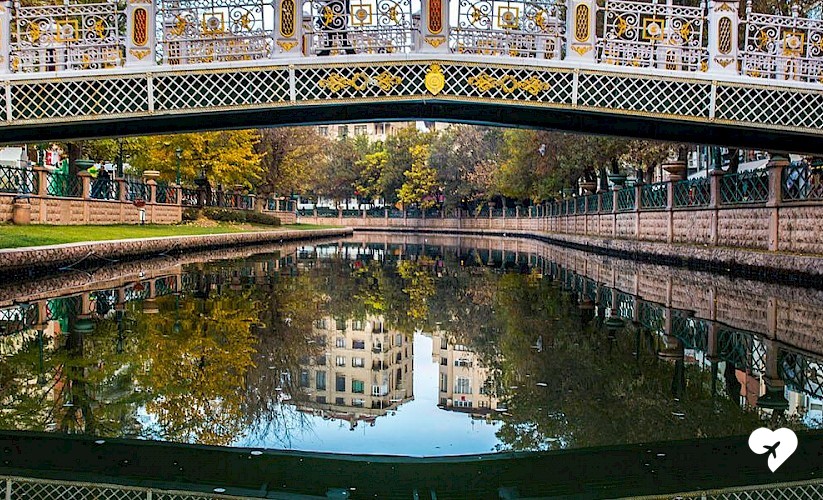Eskişehir is a university town that's sometimes called the "Venice of Turkey" for the Porsuk River that runs through the city center. It's incredibly picturesque, and the youth of the city gives a feeling of vibrancy found nowhere else. The city has history as well, with nearby ruins dating back to ancient Phrygia.
Given its intellectual, young atmosphere, the arts and culture scene in the city is excellent. There are many museums, exhibitions, concerts and more - there's always something going on.
There are high speed trains that run frequently between Ankara and Istanbul and pass through Eskişehir, so it's relatively easy to get there from either major city. In 2013, Eskişehir was the Cultural Capital of the Turkic World and received the title of UNESCO Capital of Intangible Cultural Heritage.
So when you head down there, what's a long weekend going to look like?
Day 1:
Adalar District

The Porsuk River runs through the center of the city, and Adalar is the name of the district right on the river front. This is an excellent place to get some breakfast or a cup of tea, with many cafes dotted all around.
As you sit and sip your tea, you'll see gondolas slowly drifting past along the river, and the view is really quite amazing.
Porsuk River: Gondola

A gondola tour down the Porsuk River is really pleasant. They tend to take only about 15 minutes, and will be the most romantic moments of your trip to the city. They depart from the Adalar district of the city and let you see most of the downtown as you drift slowly on by, checking out the restaurants and cafes that you'll walk to later on during your weekend in Eskişehir!
Sazova Park

A day out in Sazova Park is as much of a fairytale as it looks like it would be. The train into the park is the cutest little train and takes you right on into a world that looks like all those books you read when you were a kid (or the books your kids are still reading!).
The castle is the most remarkable part of the park, and is one of the symbols of the city. You can go into the castle and get a bite to eat at the cafe inside, or pick up souvenirs and the gift shop.
The New Eskişehir Stadium

In the evening, check to see if you can catch a match of Eskişehir's local football team. They have excellent support (another advantage of a youthful population) and are known as the "Red Lightening." The stadium has a capacity of upwards of 35,000 people and is often packed, so it's a great experience to see a city really get behind their one and only major sports team.
Day 2
Odunpazarı Homes

Odunpazarı is a district located in the hills of the south of the city. Traditional Anatolian architecture is well preserved in this neighborhood, with narrow cobbled roads and windy, dead-end streets. The traditional styles of homes have survived to this day, and it's now under protection as a historic district. Other historic buildings in the district, including mosques and a caravanserai, are also under restoration to preserve their original texture.
Museum of Contemporary Glass Works

This museum is the first of Turkey's glass art museums. In addition to the works of local artists, Japanese, Polish, Latvian and German works of art are on display. Two of the three galleries of the museum are used to display the museum's permanent collection and the final gallery is used for exhibits, many of which are used to encourage and display the work of young and upcoming artists. The museum building itself is wonderful, and is the combination of 3 Odunpazarı homes put together.
Archaeology Museum

The Archaeological Museum houses Neolithic, Chalcolithic, Old Bronze Age, Hellenistic, Roman, Byazantine, and Ottoman works of art and other items of daily use. Again, possibly due to the vibrant nature of the city, the museum is incredibly well laid out and features many interactive exhibits which makes it great for kids.
Yazılıkaya Valley

As with everywhere in Anatolia, the history is endless. Yazılıkaya is where the Phrygians chose as their religious center, and has rock monuments with the mother goddess Kybele at its center. It's an open-air temple and one of the best examples of Phrygian artwork in the world.
